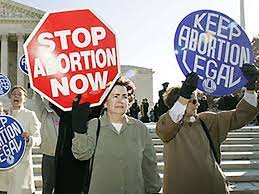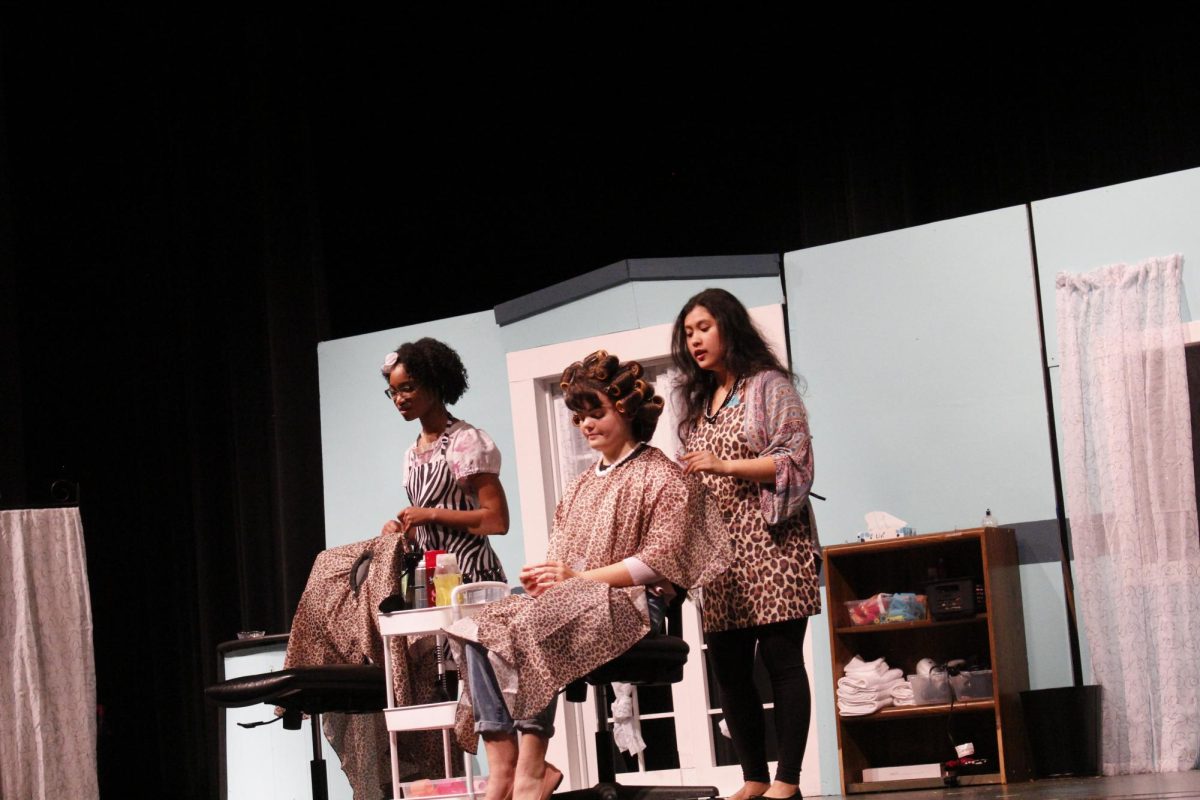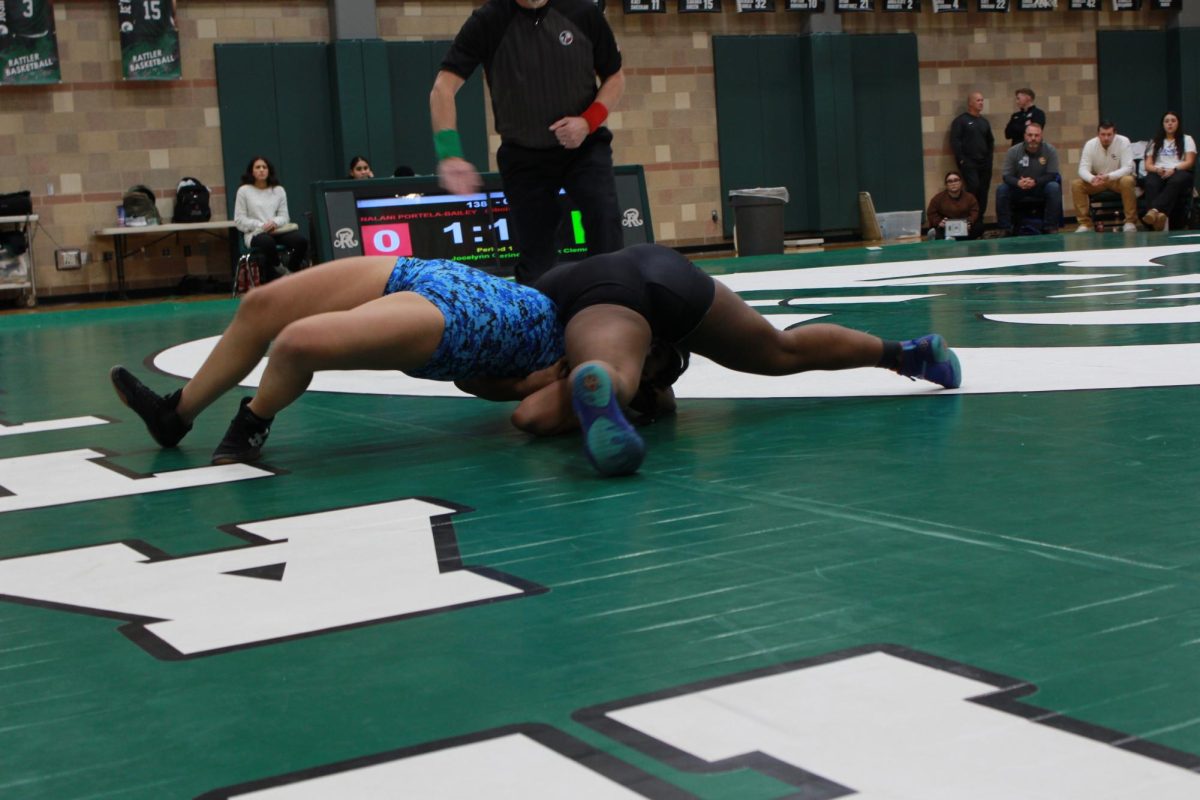My Body, Who’s Choice?

Oct 24, 2022
Abortion is arguably the most controversial topic in the United States today. The word itself conjures up images of painted protestors and raging politicians. It’s an argument that’s gripped the country for decades, but most recently, the historic overturning of Roe v Wade has reignited national debate to a level not seen in 50 years.
Abortion is defined by Merriam-Webster as “the termination of a pregnancy after, accompanied by, resulting in, or closely followed by the death of the embryo or fetus.” Just over 100 years ago, abortion was illegal in all 50 US states, with few exceptions.
However, abortions still occurred, and in 1930, illegal abortions accounted for 1 in every 5 maternity deaths. In the 1960s, several high profile cases inflamed abortion rights activists. In 1962, the pregnancy drug Thalidomide caused thousands of severe birth defects across the United States, and 4 years later, nine doctors in San Francisco were sued after they performed abortions on women with rubella, a virus known to cause birth defects.
Between 1967 and 1973, states across the US began repealing abortion legislation, until everything came to a head in 1973, with Roe v Wade, where an all-male, conservative majority Supreme Court ruled in a 7-2 decision that the constitutional right to privacy “is broad enough to encompass a woman’s decision whether or not to terminate her pregnancy.”
This decision ensured the right to abortion in the first trimester in all 50 states up until the moment of “viability”, which the Supreme Court labeled as 24 weeks after pregnancy, when the baby has a 60-70% chance of survival if born. After viability, states were given the right to regulate abortion in the second trimester as long as it was “reasonably related to maternal health,” and restrict it entirely in the third trimester.
This legislation stood for 50 years, until just this June, when Roe v Wade was overturned in a historic 5-4 Supreme Court decision, reverting the abortion decision back to individual states.
However, to say abortion wasn’t restricted before the reversal would be false. States have been pushing the boundaries of Roe v Wade for years, and the decision was predicted after Texas passed the “Texas Heartbeat Act” in September 2021, which prohibited abortion after a fetal heartbeat is detected, around six weeks after pregnancy, the most restrictive abortion law in the country at the time.
But for Texas, the Heartbeat Act was merely the beginning.
Before Roe v Wade was officially overturned on June 24, states across the country had already begun passing “trigger” laws, laws meant to go into effect almost immediately after the Supreme Court’s decision. Texas was no exception, but its trigger law, House Bill 1280, didn’t go into effect until Aug. 25th. The bill made abortion effectively illegal except when the mother’s life is in danger.
Abortion access hasn’t always been accessible. In 2020, 96% of Texas counties did not have an abortion provider, and after House Bill 1280 was passed, women in Texas suddenly had to drive 14 times farther (about 247 miles) on average to get one.
Now, as Texas approaches a decisive election, the topic of abortion is as divisive as ever.
And with many of our Steele seniors heading to the polls, abortion is a very real issue. One hot Tuesday morning, a volunteer panel of seven dual credit seniors got together to discuss abortion and its nuances. And there were so many nuances.
Just like the national political climate, where Republican lawmakers “were thrust into messy and emotional debates over some difficult issues: child rape, life-threatening medical complications from pregnancies and the devastating diagnoses of fetuses with rare and fatal conditions” Steele seniors found themselves wading through that same muck along the boundary line of what it means to be pro-life and pro-choice.
For some, like Donja*, an exception for rape or incest in Texas’s abortion law would be welcome.
“If you were raped, and so obviously that was unplanned, then you should be able to get an abortion because that wasn’t your plan,” she explained. “But if you’re just being careless and going around having fun, then your actions have consequences.”
Shannon wants abortion to be legal again, and fears a regression to the 1930s, when women died of unsafe abortions.
“I believe that, no matter what, if abortion is illegal or legal, people are going to have abortions,” she stated. “If it’s illegal, they’re just going to find a way to get one, and it’ll just be more unsafe, and I feel like if it was legal, then all these women that are trying to get abortions for many reasons, it’ll be safer for them, so might as well make it safe.”
Donja is also concerned.
“Back in history, when they tried to ban alcohol, people were still making alcohol,” she stated. “It kind of correlates with this. If you just ban abortions, people who really want it, they’re going to find a way to do it, and most likely it’s going to be the unsafe way, so in the end, you’re just going to keep losing more lives than if you just had it legal in the first place.”
Safety is a concern, even when performing legal abortions, though childbirth is still 14 times deadlier. According to Texas law, performing an abortion that does not apply to saving the mother’s life is a felony, and the doctor that performs it can face a $100,000 fine and up to 10 years in prison. As a result, doctors must make the difficult call of when the mother’s life is truly in danger while facing possible legal charges.
There are even more gray areas with abortion. Sam and Zach think abortion should be allowed for some women who know their baby will be born with genetic mutations or conditions where they will not survive long after birth.
“If it’s for sure, where the baby isn’t going to survive, then I think that would be okay,” Sam said. “I don’t think there’s any point for the woman to keep going through carrying the baby.”
“It’s also traumatic,” Zach chimed in. “Imagine knowing that you’re only carrying it so it can die.”
Others worry about how outlawing abortion would affect women in poverty. Statistics show that 75% of abortion patients are poor or low income. And according to the Plutus Foundation, it costs approximately $12,980 per year, or approximately $233,610 in total to raise a child to age 18 in the US. Financial aid through programs like Temporary Assistance for Needy Families (TANF) is available from the government, but some say it’s not enough.
“Forcing someone to go through that and knowing that that kid’s not going to have a good life in the end is not fair,” Amber argued. “Because they’re kind of setting the kid up for failure at that point.”
Even so, some seniors put up alternate ideas for helping women in need.
“Community things,” Mike said. “People helping out and getting some money from the government for the first few years or something like that if they are really financially unstable.”
“Paternal and maternal leave,” Zach added. “Maybe make it cheaper to actually get things you need to raise a baby because it’s super expensive. I would say just try to find ways to make things cheaper or work as a community to help people in general.”
For Zach, abortion would be less common if the United States adopted different policies.
“I feel like if the United States just did better work, like better social safety nets, things like universal healthcare,” he explained. “I feel like we wouldn’t have as many women get abortions.”
Sam put up the idea of spending money on kids already in the system.
“I don’t think that’s for us to decide to completely just stop the child’s life,” she suggested. “I just think all that money toward abortion could go towards making foster homes better and adoption and everything. We can work it into a better way.”
Sam remembers when Roe v Wade was overturned.
“I remember at church, after it happened, people were clapping,” she described.
Religion may be the biggest dividing factor, but not in the way many think. The majority of black Protestants, white Protestants, and Catholics support some form of abortion rights. In fact, 62% of abortion patients are religiously affiliated. The resistance to abortion seemingly comes mostly from white evangelical Christians, with 74% of the community opposing abortion. Young people are also more likely to support abortion rights, with 74% of adults under 30 versus 54% of adults over 65. Steele seniors are a perfect example of this diversity of thought.
“I’m Catholic, but I’m not going to take the opportunity away from someone else,” Amber explained. “Yes, it might be against my religion, but that’s also not my say, because not everyone has my religion. Like, there’s a separation of church and state, and a lot of people don’t understand that, because most politicians end up being Christian, and they push their beliefs on everyone when that’s not how it should be, that’s not their choice.”
“My mom is very religious,” Jason described. “She was telling me abortion was killing babies, because she’s very Catholic. It doesn’t feel like it would be right for us to impose laws on everybody in the whole country. If we have freedom of religion, we should have freedom for women to choose what to do with their child.”
“I think it is important for all of us to come together and talk, and America should be about freedom,” Sam argued. “So I should have the freedom to be a Christian, you’re going to have the freedom to choose your choice.”
The biggest argument against abortion is that it is murder, that it’s like killing a baby.
“I’m a Christian. I think it’s a life, and I have my opinions about that,” Sam said.
Mike believes it’s a life after the first trimester, and Zach agrees with the Supreme Court’s original ruling in 1973, at 24 weeks.
“As soon as the fetus is able to live outside of the mother without needing the mother’s body to do so, I feel like it could be considered a life,” he voiced. “Before then, it’s only as alive as grass or plants. It’s living, but it’s not conscious. It doesn’t think on its own. It doesn’t have any drives other than to exist.”
Is there common ground?
Zach says no.
“I think it’s hard for pro-choice and pro-life to actually come together to a consensus, because one side believes it’s literal murder and the other side does not,” he insisted. “Ideologically, you can’t come to an agreement, because they are just completely opposed to each other.”
There is one thing everyone seems to agree on, though. Politicians are hard to trust.
“At this point, no one’s surprised,” Zach sighed. “You vote for a politician, and they say one thing and do another. So we need more citizens to actually vote on laws. We should do that more in general, including with abortion.”
What he’s referring to is the recent development in Kansas, where registered voters voted directly on the topic of abortion, deciding to keep abortion rights in their state constitution. While a vote like this in Texas would certainly be interesting, it is nearly impossible-at least in the near future-as it would require a two-thirds vote by each body of state legislature, which right now are both Republican-controlled.
Either way, the future of abortion and other contested issues rest on voters across Texas, including our Steele seniors.
“We are the future voters,” Donja declared. “What happens in office now is going to fall on us.”
Luke was especially adamant about voting.
“I really think there should be an emphasis on our peer group and our age group to go out and vote, because laws that are being put into effect literally as we speak will affect us not only six months from now, not only a year from now, but ten years down the road when we’re adults with our own children,” he added. “So I think an emphasis should be made on getting people out to the polls, getting people informed, and getting the right people in office to not only make a change based on their self-interest and what they want to do, but to have a greater effect on us as a whole, which will in turn create a better America for the future.”







